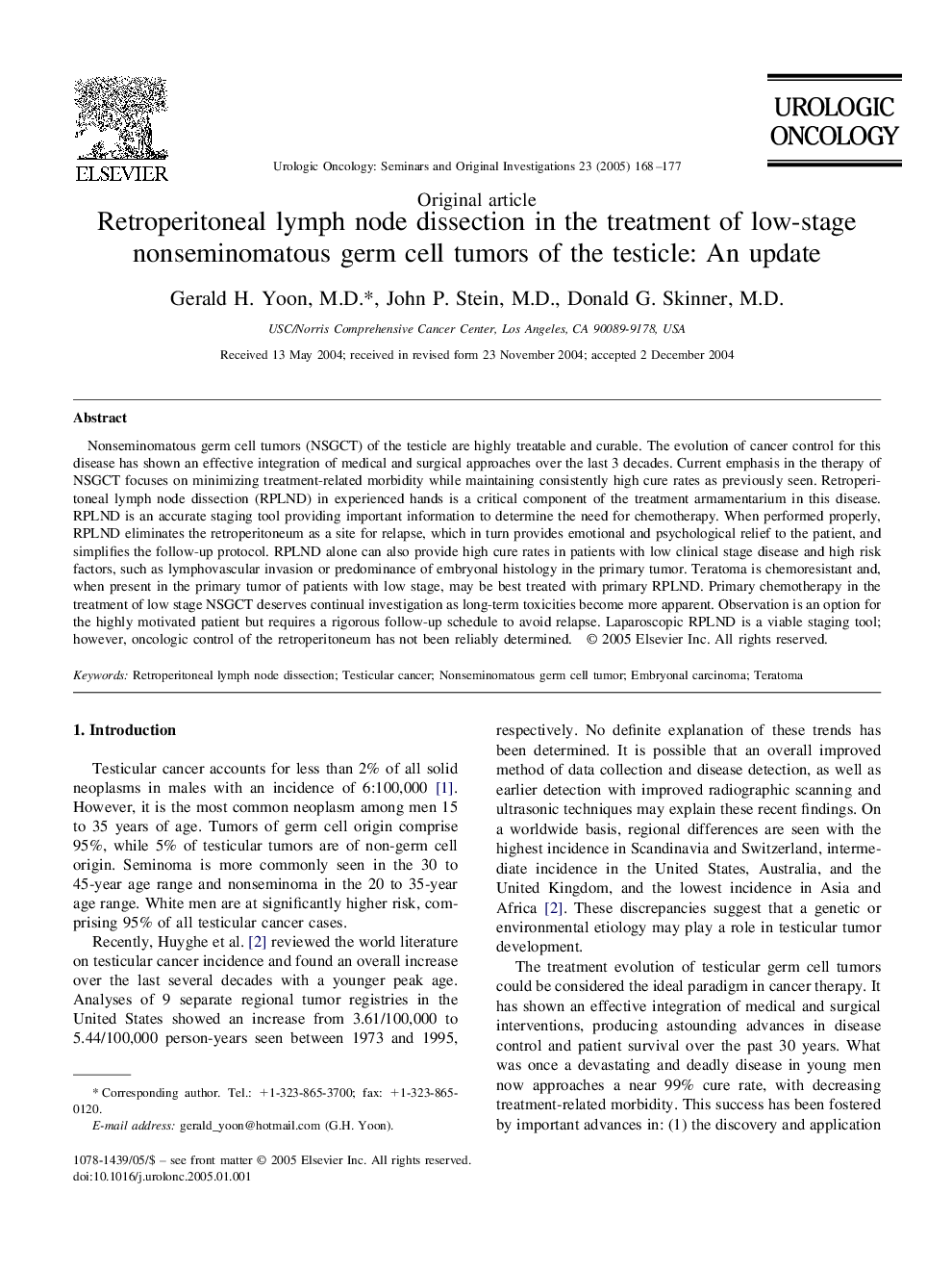| Article ID | Journal | Published Year | Pages | File Type |
|---|---|---|---|---|
| 9340927 | Urologic Oncology: Seminars and Original Investigations | 2005 | 10 Pages |
Abstract
Nonseminomatous germ cell tumors (NSGCT) of the testicle are highly treatable and curable. The evolution of cancer control for this disease has shown an effective integration of medical and surgical approaches over the last 3 decades. Current emphasis in the therapy of NSGCT focuses on minimizing treatment-related morbidity while maintaining consistently high cure rates as previously seen. Retroperitoneal lymph node dissection (RPLND) in experienced hands is a critical component of the treatment armamentarium in this disease. RPLND is an accurate staging tool providing important information to determine the need for chemotherapy. When performed properly, RPLND eliminates the retroperitoneum as a site for relapse, which in turn provides emotional and psychological relief to the patient, and simplifies the follow-up protocol. RPLND alone can also provide high cure rates in patients with low clinical stage disease and high risk factors, such as lymphovascular invasion or predominance of embryonal histology in the primary tumor. Teratoma is chemoresistant and, when present in the primary tumor of patients with low stage, may be best treated with primary RPLND. Primary chemotherapy in the treatment of low stage NSGCT deserves continual investigation as long-term toxicities become more apparent. Observation is an option for the highly motivated patient but requires a rigorous follow-up schedule to avoid relapse. Laparoscopic RPLND is a viable staging tool; however, oncologic control of the retroperitoneum has not been reliably determined.
Keywords
Related Topics
Health Sciences
Medicine and Dentistry
Oncology
Authors
Gerald H. M.D., John P. M.D., Donald G. M.D.,
